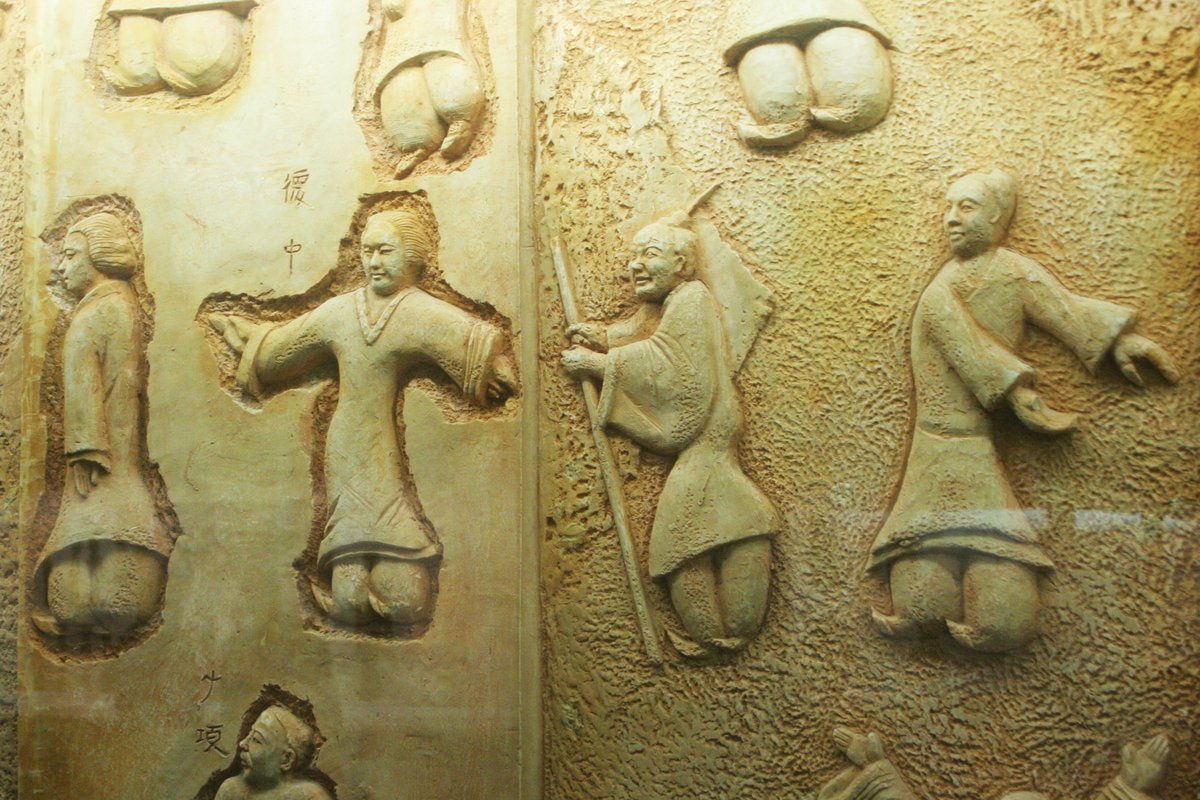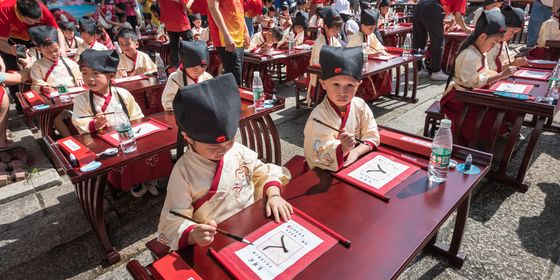Learn the origin of footbaths in the southern city of Changsha, and how bathhouses shed their seedy reputation to become modern entertainment complexes
Hua Tuo, one of the most respected physicians in Chinese history, wrote in his classic The Way of Feet (华佗《足心道》), “A man has feet, just as a tree has roots. A tree’s roots are depleted before it dies, and a man’s feet fail before he grows old (人有脚,犹如树有根。树枯根先竭,人老脚先衰).” Few places seem to have taken this wisdom to heart like China’s traditional footbath businesses.
According to traditional Chinese medicine, there are over 60 acupoints on both feet. Bathing and massaging the feet is believed to improve organ function and unblock the meridians, 12 pathways of energy flowing through the body. In particular, the acupoint in the middle of the feet, connecting to the kidneys, is called the yongquan or “gushing springs” point (涌泉穴). One may press this point regularly to supply the body with vital energy.
The capital of the south-central Hunan province, Changsha, is also known as China’s “foot capital,” a name that originates from a novel of the same name written by Yu Jianchu in 2006. In the book, the foot is referred to as one’s “second heart,” and a rural girl who is expert at massaging feet makes a married man fall in love with her.
Changsha’s rich foot culture dates back to more than 2,000 years ago. In 1974, a painting called “Guiding Diagram (《导引图》)” was unearthed from the Han dynasty (206 BCE – 220 CE) tombs at Mawangdui in Changsha, showing various figures practicing qigong, acupressure, and foot massage.
As Changsha has a subtropical monsoon climate, it is hot and steamy in summer and cold and wet in winter. Footbaths are meant to drain out the “dampness” inside the body and create a balanced internal environment. Since the region also grows rice, there were plenty of husks to burn as cheap fuel to heat the bathhouses.
Changsha claims to have more than 15,000 footbath houses, and like regular bathhouses, they had a seedy reputation in decades past. Footbath houses hidden in narrow lanes illuminated with pink lights were often fronts for prostitution. Even at legitimate footbath businesses, long hours and poor working conditions are still common. Sanxiang City News reported in 2011 that there were over 200,000 “footbath girls” in Changsha, most of them between 18 and 40 years old, who led a tough and tedious life working over 12 hours a day, living in cramped dormitories the rest of the time. This September, media outlet Truman Story reported the story of several footbath attendants, ranging from single mothers to jobless university graduates, who told of having to endure sexual harassment from customers, catering to foot fetishes, and even being asked to provide sexual services by employers feeling the pinch of the pandemic.
Changsha established the first footbath industry association and rolled out rules to improve safety and standards of service in the industry in 2009. Rooms in footbath houses cannot be kept in the dark and they must use see-through windows. They are also required to use towels and other equipment for each customer and disinfect strictly. While these changes have led many small bathhouses to die out, many of those who survived have evolved into “footbath cities (洗脚城)”—massive entertainment complexes offering a fun night out for everyone.
Stereotypically, middle-aged men are considered footbaths’ most loyal customers. For a reasonable price, they can get a massage from lovely young women who will listen to their troubles and relieve the pain in their feet and lower legs. The discreet and intimate space is also a venue for concluding sensitive deals in some southern cities, or a relaxing retreat for businessmen after a night of drinking.
With the emergence of “footbath cities,” though, the clientele has become more diverse. Office workers who want to relax after a long tiring day, and even young couples on dates, might get a footbath followed by a movie, video games, or even karaoke—all on a single entrance ticket, without ever leaving the building. The all-you-can-eat buffets on offer at “footbath cities” are another draw: from the pickled radish and duck soup, to spicy wontons, to beef rice noodles, every major bathhouse in Changsha claims to have a signature food, and it’s said that the most authentic Changsha cuisine is found in its “footbath cities.”
“After 9 every night, when I finally have time for myself, I go for a footbath and set my mind free,” frequent customer Xu Tianke, who picks up his daughter after work every day and supervises her homework until 9 p.m., tells TWOC. Many footbath cities have taken on massive upgrades to create such a haven for their customers. In Changsha, one can find Spartan warrior statues, Roman fountains, terracotta soldiers—even one designed with an outer space theme.
The diversity of footbath houses also extends to the very bathwater they offer. Rose, vinegar, milk to ginger, mugwort, and packs of up to 20 different types of herbs—many cities in China claim to have their own soaking secret for reinvigorating tired feet and making them smell good. In Changsha, adventurous customers even have the choice of making their feet smell like the city’s most beloved (or hated) snack, stinky tofu.
A footbath typically starts with soaking the feet, before the attendant arrives to perform her special brand of kung fu: pointing, pressing, kneading, pushing, rubbing, knocking, pinching, squeezing, shaking, and stepping to relax the muscles of the feet. First-timers might even scream from the pain, though regulars claim this goes away after a few visits—and that they sometimes feel so relaxed they fall asleep.
Adding to the vaguely illicit feel of footbath houses is that they typically assign female attendants to male customers, and male attendants to female customers. Lin Lin, a 34-year-old office worker, tells TWOC that she was a bit uncomfortable when she first went for a footbath and encountered this custom. “It’s your first time, right?” she recalls the masseur asking her, saying that female customers become bolder with every visit.
A classic footbath package typically lasts 90 minutes and costs less than 200 yuan. Those looking to extend their relaxation can visit a footbath city for a full-body massage: from the head to the shoulders, arms, waist, back, and legs, ending with the feet. If they still feel reluctant to leave, they can pay a bit more to stay overnight in the quiet sofa area, with toiletries, disposable underwear, and other supplies for a worry-free sleep. When they wake up in the morning, the free breakfast buffet awaits.













